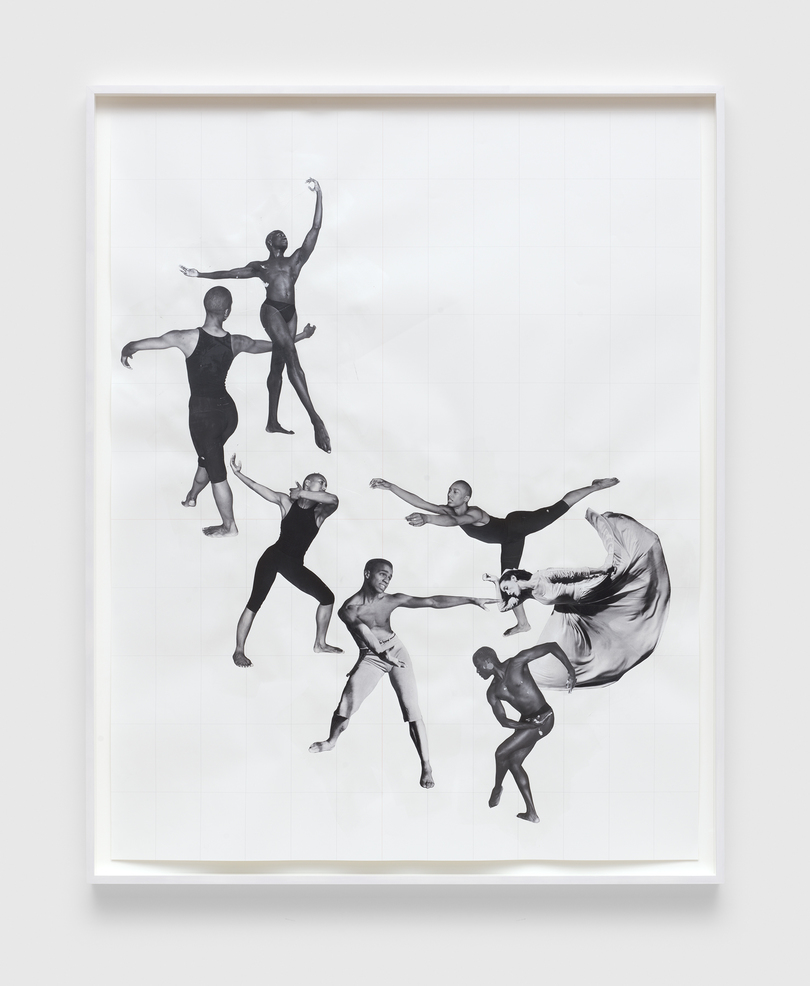
- Source: ARTFORUM
- Author: Marcus Civin
- Date: January 8, 2022
- Format: PRINT AND DIGITAL
Critics’ Picks: Kandis Williams
New York

Kandis Williams, A Kick and an extension; Graham dramatic solemnity—The Lindy Hop is black dance, funerary in solar plexus, 2021, Xerox collage on paper, 48 x 65 3/4".
Dancers intermingle through time and space across sixteen large-scale collages, a video, and six sculptural, plant-like assemblages in the Los Angeles–based artist Kandis Williams’s first New York solo outing, “A Line,” curated by Ebony L. Haynes. The polymath’s transhistorical narratives are rich, sharp, and choreographic: Take A Kick and an extension; Graham dramatic solemnity—The Lindy Hop is black dance, funerary in solar plexus, 2021, which is made up of carefully cut-out and glued images of modern dance pioneers Martha Graham and Donald McKayle, laid over a graphite grid on white paper. Around the duo are pictures of contemporary Black dancers that Williams photographed in her studio. By surrounding Graham with these figures, the artist subtly reminds us that Graham appropriated Black and Indigenous dance into her own work while carving out a place for herself within the American vanguard.
References to Oskar Schlemmer’s fantastical Bauhaus theater piece, Triadic Ballet, 1922, permeate this exhibition. Her nine-minute video of the same name, made in 2021, uses history instead of costume as its primary driver. In this work, a dancer navigates the space in front of a screen where the past flickers on and off: At various points, we see the Orientalist vaudeville performer Princess Rajah, in 1904, spinning with a chair in her mouth; volunteers taking scissors to Yoko Ono’s clothing for her 1964 performance Cut Piece; Janet Jackson wearing militaristic gear and welcoming us to Rhythm Nation in 1989; and the beating of Rodney King by LA police only two years later. The show addresses the myriad ways people of color get exploited by a culture industry that rips off their innovations and efforts on a regular basis. Fortunately for us, Williams foregrounds these injustices, quietly but powerfully, while marking out parameters for another kind of vanguard.

